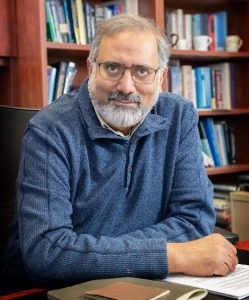Abstract: Quantum Chromodynamics (QCD) is the theory Strong Interactions which tries to explain the hadrons and nuclei in the observable universe in terms of interactions amongst quark-gluon. After decades of investigations, astonishingly (and somewhat frustratingly), we still do not understand some of the most basic things in QCD: for example, how the proton’s spin and its mass emerge from those quark-gluon interactions. Similar frustrations persist in the understanding of structure and properties of the nuclei. Gluon, the colored charged self-interacting force carriers of QCD, is suspected to be at the root of these "frustrations”. Further, at high-enough-energies, these self-interactions amongst the gluons are expected to lead to a novel state of gluonic matter. However, despite several attempts, irrefutable evidence for this novel gluonic state of matter (called Color Glass Condensate) remains elusive. These and such “exciting frustrations” are at the heart of the science case for the future Electron Ion Collider (EIC) now being built at Brookhaven National Laboratory (BNL) jointly by BNL and Jefferson Lab. Starting with early 2000’s when the EIC was first proposed, science scope and its accelerator design have developed and matured. The EIC user community has grown to ~1300+ scientists from 250+ institutions and six continents, and it is now preparing to build the detectors. In this talk after a review of the EIC Science, I will present the status of the project and the anticipated path to first collisions. I will also reminisce about IUCF and IU’s important role in the EIC project.
Colloquium: Abhay Deshpande on The Electron Ion Collider : a QCD fantasy on the way to reality
Wednesday, October 5, 2022
4:05 P.M. – 5:00 P.M.
Location: Swain West 119

 The College of Arts
The College of Arts